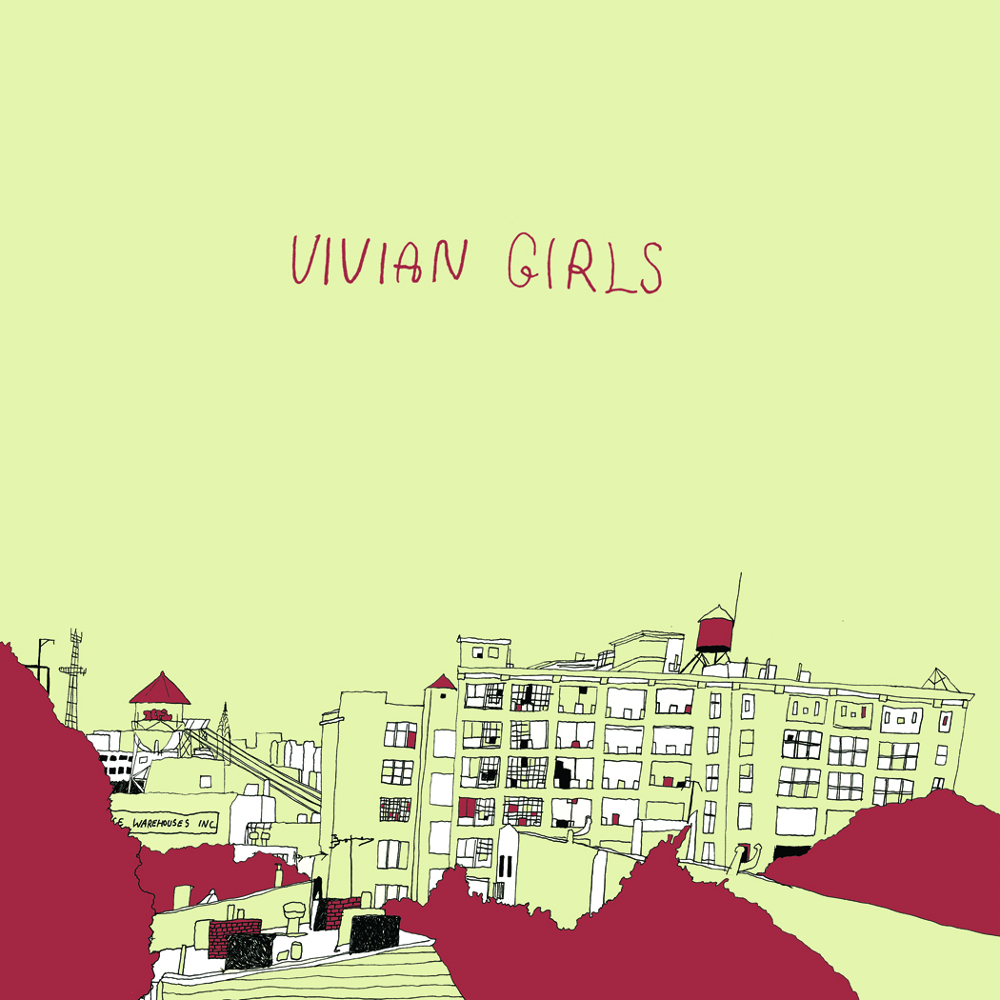The indie rock subgenre known as "noise-pop," which distorts candy-sweet melodies with blown-out guitars and echo, had something of a renaissance in the late 2000s. Vivian Girls, the rough-hewn debut by the currently inactive Brooklyn band of the same name, provides 22 of the messiest and most influential minutes of the whole revival. It turned 10 yesterday. Released by In The Red 35 days before Barack Obama was elected president, the album was an all-killer-no-filler introduction to an awesome band -- and, for a certain subset of millennial indie kids, to the very idea that lo-fi could be an aesthetic choice, that atmosphere and production were just as important as things like lyrics and riffs and melodies.
Vivian Girls was recorded in January of 2008, back when the trio's lineup included suburban New Jersey schoolmates Cassie Ramone and "Kickball Katy" Goodman, plus founding drummer and reverb enthusiast Frankie Rose. The In The Red issue of Vivian Girls was technically a re-release; the original run of 500, pressed by the teensy Chattanooga label Mauled By Tigers, sold out in less than two weeks. By the fall, Rose had split to play with Crystal Stilts full-time, Goodman's kindred college pal Ali Koehler had stepped in, and there was already a contagious excitement surrounding the sloppy punk project; first-run copies of the LP were going for upwards of $60 online.
A lot of early conversations circled around Vivian Girls' retro influences, from their K Records-style confrontational amateurism, to their Slumberland-channeling lo-fi production, to the fact that Cassie Ramone sounded a little bit like Skeeter Davis. But anyone obsessively trying to pinpoint their cocktail of touchstones was missing the point; for less jaded listeners whose foray into the DIY underground jump-started when Limewire gave way to mp3 blogs, the historical context -- though significant -- was less important than the overall psychic impact of the songs.
On Vivian Girls, that impact has a lot to do with the music's unwieldy qualities, which mirror the emotionally destabilizing experience of falling in and out of love. Disheveled opener "All The Time" describes a Badlands-esque codependency ("We go commit a crime/ I see him all the time"), while the giddy, nervous racket of "Going Insane" sounds a lot like how a crush-induced unraveling feels. "Where Do You Run?" -- on which the repetition of the title phrase always seemed, to me, like a homonymic allusion to the Crystals' "Da Doo Run Run" -- is the kind of jingly earworm that's extremely fun to blast when you're feeling isolated; singing along with a three-part harmony can do wonders for loneliness, trust me. And then there's forever jam "Tell The World," which barrels along like a runaway subway car, borderline meditative in its haunting noisiness.
At the time of its release, Vivian Girls was polarizing, to say the least. Its makers were subjected to the kind of trolly misogyny-as-criticism that still permeates today, even as enough women and nonbinary-centric rock projects enter "the conversation" to warrant an endless stream of self-congratulatory "Women In Rock" trend pieces.
But, as often is the case, the same reasons the album was scrutinized were also why it resonated. In an era when indie was a whole lot of pastoral-sounding boy bands and Coachella-bound psych, listeners craved something different, something catchy but not polished, raw but not mean. For a brief, shining moment, the new wave of noise-pop was that thing, and these scrappy songs by the Vivian Girls, pure-feeling and content in their clumsiness, were rightfully at the center of it all. In its own ramshackle way, the record felt both hip and timeless. In its own way it still does.
https://youtube.com/watch?v=hUt60wf-0Ss
https://youtube.com/watch?v=CRHSOH1S0QI
https://youtube.com/watch?v=bgk-uzPFuzo






